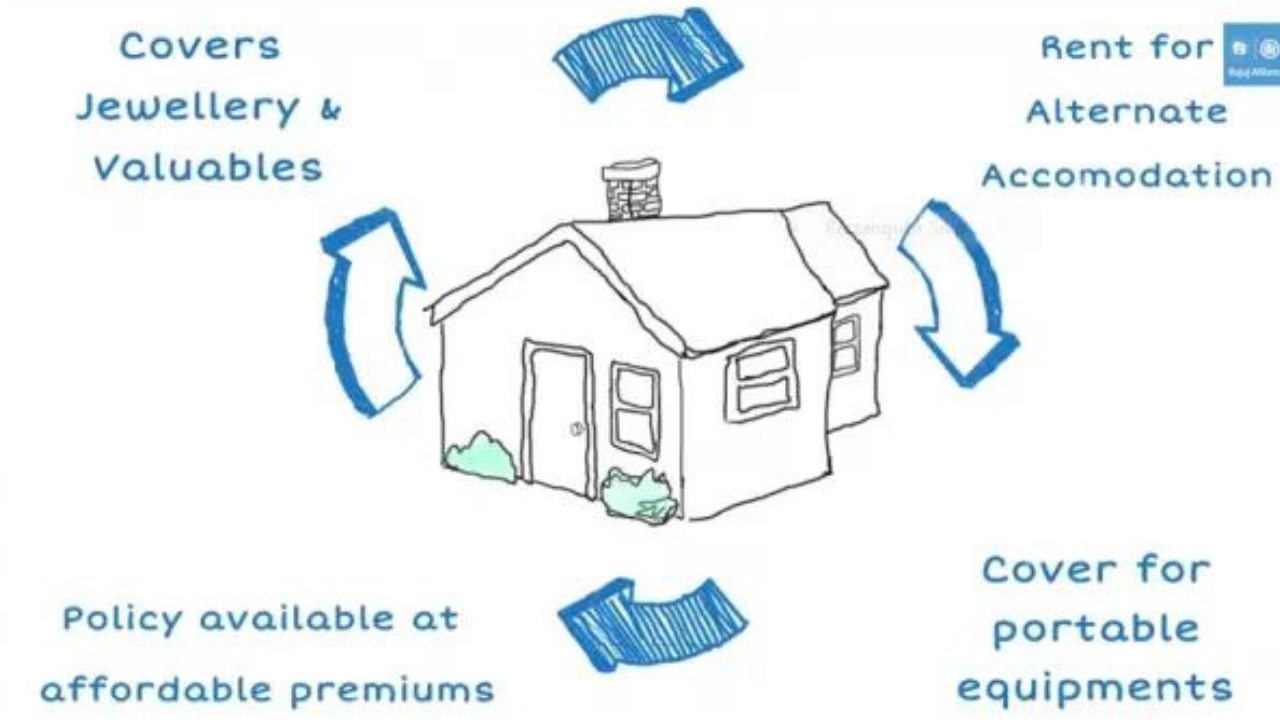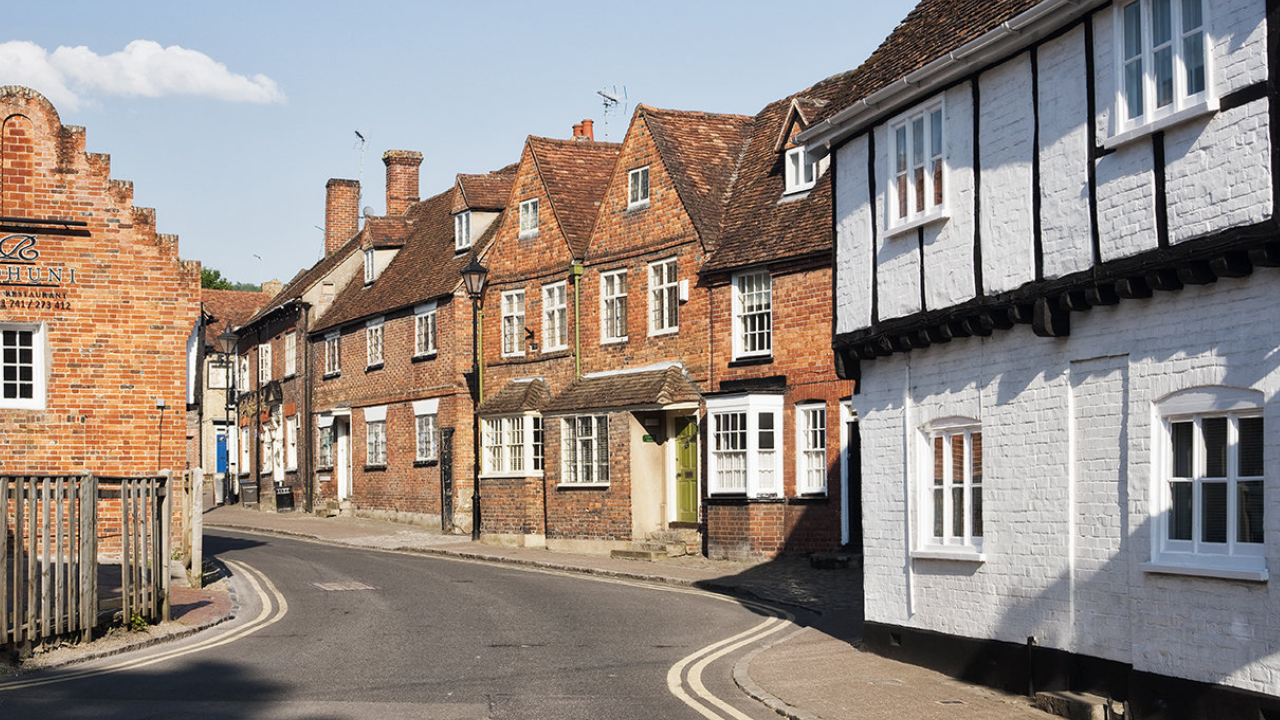Home Insurance UK. Home insurance in the UK serves as a crucial safeguard for homeowners, offering both peace of mind and financial protection. The essence of home insurance lies in its comprehensive coverage, which can protect against various risks such as theft, fire, and natural disasters. For homeowners, understanding the importance of home insurance is vital as it ensures that their most significant investment is protected.
Typically, home insurance is divided into two main categories: buildings insurance and contents insurance. Buildings insurance covers the structural aspects of the property, including walls, roofs, and floors, safeguarding against damage or destruction due to insured events like fire or floods. On the other hand, contents insurance protects personal belongings within the home, covering theft or damage to items such as furniture, electronics, and clothing.
Given the unpredictable nature of potential hazards, home insurance offers a level of reassurance that is invaluable. In the unfortunate event of a burglary or a natural disaster, having a robust insurance policy can mitigate financial losses significantly. Without such coverage, homeowners would face the full brunt of repair or replacement costs, which could be financially debilitating.
Furthermore, many mortgage lenders in the UK require borrowers to have home insurance as a stipulation for securing a loan. This requirement underscores the critical nature of having adequate insurance coverage, ensuring that both the homeowner and the lender’s investment are protected. Additionally, having home insurance can greatly impact the resale value of a property, as prospective buyers are often reassured by a well-maintained, insured home.
Ultimately, home insurance in the UK is not just a financial formality but a practical necessity. It provides homeowners with a safety net that can alleviate stress and financial strain in times of unforeseen events. With the right policy in place, homeowners can rest easy, knowing that their homes and possessions are well-protected against a range of potential risks.
Home Insurance Policies

When it comes to protecting your home in the UK, understanding the various home insurance policies available is crucial. There are primarily three types of home insurance policies: buildings insurance, contents insurance, and combined building and contents insurance. Each type offers different levels of coverage, tailored to meet distinct needs and circumstances.
Buildings Insurance chiefly covers the structural aspects of your home. This includes the roof, walls, floors, and permanent fixtures such as fitted kitchens and bathrooms. In essence, buildings insurance is designed to protect against damage resulting from fires, storms, floods, and other unexpected events that may compromise the integrity of the structure. It is particularly beneficial for homeowners, as mortgage lenders often mandate this type of insurance.
Contents Insurance focuses on protecting the possessions inside your home. Your furniture, electronics, clothing, and personal belongings are all covered under this policy against risks such as theft, fire, and water damage. Contents insurance is ideal for renters, who typically do not need to worry about the building itself but want to ensure their possessions are safeguarded.
Combined Building and Contents Insurance offers a comprehensive approach by covering both the structure and its contents. This option is advantageous for homeowners who prefer a single policy that encompasses all aspects of their home. By opting for a combined policy, policyholders can often benefit from cost savings and streamlined management.
Choosing the right type of home insurance policy depends on your living situation and specific needs. Homeowners might lean towards buildings insurance or a combined policy to protect both their property and possessions. Renters, on the other hand, may find contents insurance more suitable. Understanding these distinctions can help ensure you select the most appropriate coverage to safeguard your home and belongings.“`
Understanding Buildings Insurance

Buildings insurance is a crucial aspect of home insurance in the UK. It primarily covers the structural elements of your home, such as the roof, walls, and floors. This type of insurance safeguards against a broad range of risks, ensuring that the physical structure of your property is protected from unforeseen events. Typical coverages include damage caused by fires, floods, storms, and vandalism.
One of the primary advantages of having buildings insurance is the financial protection it offers in the event of significant structural damage. For example, if a lightning strike damages the roof, or if a severe storm damages the walls, your buildings insurance policy will cover the costs associated with repairing or rebuilding your home. This is particularly important considering the high costs of structural repairs.
However, it is also essential to be aware of what buildings insurance typically excludes. Most policies do not cover general wear and tear, damage due to poor maintenance, or damage caused by pests. Additionally, some policies may exclude certain natural disasters, such as earthquakes, so it is crucial to review your policy’s terms and conditions carefully.
Accidental damage insurance is sometimes included in buildings insurance, but it often needs to be added as an extra. This can cover unintended damage, such as drilling through a water pipe or smashing a window. Ensuring that your policy includes this could offer extra peace of mind.
When choosing a buildings insurance policy, policyholders should consider several key factors. Primarily, the sum insured should be adequate to cover the full cost of rebuilding the property. Additionally, understanding the excess amounts – the amount you’ll need to pay out of pocket before your insurance kicks in – is vital. Comparing different policies, considering the coverage limits, exclusions, and additional features, will help you find a plan that offers comprehensive protection for your home.
Understanding Contents Insurance
Contents insurance is a critical component of a comprehensive home insurance policy in the UK, designed to safeguard your personal possessions within the property. This coverage typically addresses a wide array of items, including furniture, electronics, clothing, and other personal belongings, providing financial relief in the event of loss or damage due to incidents such as theft, fire, or flooding.
When selecting a contents insurance policy, it is essential to understand the two primary types of coverages available: replacement as new cover and indemnity cover. The replacement as new cover ensures that damaged or stolen items are replaced with new ones of a similar make and quality, effectively allowing homeowners to recover their possessions without durability concerns. Conversely, indemnity cover accounts for the depreciation of items over time, reimbursing the current market value rather than the initial purchase price. This means that while the indemnity cover often results in lower premiums, it may not entirely cover the cost of replacing old or worn-out items.
However, several exclusions may apply to contents insurance policies, and homeowners must thoroughly review them to avoid unpleasant surprises. Common exclusions include damage resulting from wear and tear, neglect, or poor maintenance, which are viewed as preventable by routine care. High-value items, such as expensive jewelry or artwork, may also require additional coverage or separate valuations to be fully insured. Understanding these exclusions helps policyholders make informed decisions on safeguarding their possessions adequately.
Ultimately, understanding the nuances of contents insurance is crucial for homeowners aiming to protect their investments. By differentiating between replacement as new and indemnity cover, and recognizing potential exclusions, individuals can tailor their policies to meet their specific needs, ensuring comprehensive protection for their personal property.“`
Factors that Influence Home Insurance Premiums
Understanding the factors that influence home insurance premiums is crucial for homeowners looking to manage their expenses effectively. The cost of home insurance in the UK can vary significantly based on a variety of considerations, many of which are tied to the specifics of the insured property and the homeowner’s choices.
Property Location: The geographical location of a property plays a pivotal role in determining the premium. Areas with higher crime rates often lead to higher premiums, as the risk to the insurer is deemed greater. Conversely, properties in low-risk areas like quieter, safer neighbourhoods generally enjoy lower premiums. Additionally, properties in regions prone to natural disasters, such as flooding or subsidence, will typically attract higher insurance costs due to the elevated risk of damage.
Age and Type of Property: The age and type of your property can also impact your insurance costs. Older buildings might be more expensive to insure due to the potential for outdated electrical wiring, plumbing, and structural issues. On the other hand, newer constructions, built with modern materials and compliance to current safety standards, often benefit from lower premiums. The construction material also matters; for example, properties built with brick or stone are usually less expensive to insure than those constructed with timber.
Security Measures: Implementing robust security measures can significantly lower your home insurance premiums. Insurers favour homes equipped with security systems, such as burglar alarms, smoke detectors, and sturdy locks. These measures reduce the risk of burglary and fire, leading to potential discounts on premiums.
Claims History: Your insurance claims history is another critical factor. A history of frequent claims can make you appear riskier to insurers, thus raising your premiums. Maintaining a claims-free track record can help you secure lower costs over time.
Add-Ons and Policy Choices: The specifics of your insurance policy, including any add-ons or increased coverage levels, will also influence the cost. While it’s tempting to cut coverage to save on premiums, ensuring adequate cover is vital. Carefully consider the balance between cost and coverage to find the best policy for your needs.
To reduce your premiums without compromising on coverage, consider increasing your voluntary excess, installing additional security features, and combining home and contents insurance into a single policy. By understanding these key factors, homeowners can make informed decisions and effectively manage their home insurance costs.
How to Choose the Right Home Insurance Policy

Selecting an appropriate home insurance policy is a crucial step to safeguard one’s home and personal belongings. The process requires a thoughtful evaluation of multiple factors to ensure that the chosen policy aligns with individual needs and offers comprehensive coverage.
The initial step in choosing the right home insurance policy is to assess your specific needs. Start by evaluating the type and value of your property and personal belongings. Consider the level of coverage you require for both the building and its contents. If you reside in an area prone to natural disasters, such as flooding, you may need a policy that includes additional coverage for such events.
Next, compare home insurance quotes from various providers. Utilize online comparison tools to streamline this process. These tools allow you to input your requirements and retrieve quotes from different insurance companies, making it easier to compare costs and coverage options side by side. When comparing quotes, it’s vital to look beyond the premium price. Examine the details of what each policy covers, including any exclusions, limits, and deductibles.
Understanding the terms and conditions of a policy is paramount. Thoroughly read the policy document to understand the extent of coverage, payout limits, and any specific exclusions or conditions. Pay close attention to the fine print, especially clauses related to claim processes and payout timelines. Knowing these details beforehand can prevent unpleasant surprises during a claim.
Online customer reviews and ratings can also provide valuable insights into the reliability and customer service standards of insurance providers. Look for feedback regarding the claims process, customer support, and overall satisfaction.
In summary, choosing the right home insurance policy requires careful assessment of your needs, diligent comparison of quotes and coverage, and a solid understanding of the policy terms and conditions. By following a systematic approach, you can secure a home insurance policy that offers optimal protection and peace of mind.
Claims Process for Home Insurance

The process of making a home insurance claim in the UK involves several essential steps to ensure your claim is handled efficiently. The first step in the claims process is documentation. It is imperative to keep a detailed record of any damage or loss. This includes photographs, receipts, and any other relevant evidence that supports your claim. Proper documentation can significantly impact the outcome of your claim, making it easier for the insurer to understand the extent of the damage or loss.
Contacting your insurer is the next critical step. Most insurers provide a dedicated claims line available around the clock. It is advisable to report the incident to your insurer as soon as possible. During this initial contact, you will need to provide specific details of the incident, including the date, time, and nature of the damage or loss. Having all the necessary information at hand can facilitate a more efficient communication process.
The insurer will typically assign an adjuster to assess the claim. This assessment may involve an in-person inspection of the damage. The adjuster’s role is to determine the validity of your claim, the extent of the damage, and the appropriate amount of compensation. Therefore, ensuring that you cooperate fully with the adjuster and provide any additional information they might require is essential for a smooth assessment process.
To further streamline your claims process, consider a few additional tips. Keep a copy of all correspondence with your insurer, including emails and letters. Be honest and accurate when providing information, as discrepancies can delay your claim or lead to its denial. Understanding your policy’s terms and coverage limits beforehand can also prevent unexpected surprises during the claims process.
By following these steps and maintaining open lines of communication with your insurer, you can navigate the home insurance claims process more effectively, ensuring that you receive the compensation you are entitled to without unnecessary delays.
Common Pitfalls and How to Avoid Them

Home insurance is an essential safeguard for homeowners, yet many fall into common traps that can lead to inadequate protection. Understanding these pitfalls is crucial to ensuring your home insurance fully covers your needs.
One frequent mistake is underinsuring your property. Many homeowners err in estimating the value of their possessions or the cost of rebuilding their homes, often resulting in policies that don’t offer sufficient coverage. To avoid this, it is advisable to conduct a thorough inventory of your belongings and get an accurate assessment of your property’s rebuild cost. Utilizing tools and services that provide professional valuations can help ensure that your coverage meets the actual value.
Another common error is failing to update the insurance policy in light of significant changes. Home renovations, such as extensions or loft conversions, can increase the value of your property and its insurance requirements. Whenever you make such modifications, inform your insurer to update your policy accordingly. This proactive measure ensures you are not left underinsured after improvements to your home.
Overlooking policy exclusions is another major pitfall. It is crucial to read the fine print to understand what is and isn’t covered by your home insurance. Common exclusions include damages from wear and tear, certain types of water damage, and high-value items exceeding individual policy limits. Ensure you are aware of these exclusions and consider additional coverage if necessary, especially for high-value possessions or specific risks relevant to your area.
Additionally, homeowners should periodically review and compare insurance policies to ensure they are receiving the best coverage for their needs. The home insurance market is competitive, with new deals regularly emerging. Taking the time to compare can lead to better coverage or cost savings.
By recognizing these common pitfalls and taking steps to avoid them, homeowners can maintain robust home insurance coverage that adequately protects their property and assets.
Conclusion
In the UK, home insurance is an essential safeguard for protecting your property and belongings from unexpected events such as theft, fire, and natural disasters. With a wide range of policies available, it’s crucial to carefully evaluate your coverage needs, whether for buildings, contents, or both. Shopping around, comparing quotes, and understanding the terms of your policy can help you find the best deal. Ultimately, having the right home insurance in place not only provides financial protection but also offers peace of mind, knowing your home and possessions are secure.
FAQs
1. What is home insurance?
Home insurance is a type of insurance that covers the costs of repairing or replacing your home and its contents in case of damage, theft, or loss.
2. What are the types of home insurance?
There are two main types:
- Buildings insurance: Covers the structure of your home (e.g., walls, roof).
- Contents insurance: Covers your personal belongings inside the home (e.g., furniture, electronics).
3. Do I need both buildings and contents insurance?
If you own your home, it’s recommended to have both. Buildings insurance protects the structure, while contents insurance protects your belongings. Renters typically only need contents insurance.
4. Is home insurance mandatory in the UK?
Home insurance is not legally required, but most mortgage lenders will require buildings insurance as a condition of the loan.
5. What does home insurance typically cover?
Home insurance covers risks like:
- Fire, storms, or flooding
- Theft or vandalism
- Water damage (like burst pipes)
- Accidental damage (if included in the policy)
6. What is not covered by home insurance?
Common exclusions may include:
- General wear and tear
- Damage caused by pests
- Damage from lack of maintenance
- Some forms of accidental damage unless specified
7. How can I reduce my home insurance premiums?
- Install security measures like alarms or cameras.
- Increase your voluntary excess.
- Pay annually instead of monthly.
- Shop around and compare quotes.
8. Can I switch my home insurance provider mid-policy?
Yes, you can switch, but check if there are any cancellation fees with your current provider. Compare the new policy to ensure you’re getting better value or coverage.
9. Will my insurance cover me if I rent out my home?
Standard home insurance might not cover rental properties. You would need landlord insurance if you rent out your property.
10. How do I make a claim on my home insurance?
Contact your insurance provider as soon as possible, provide the necessary documentation (like receipts and photos), and follow their claims process. The insurer will assess the damage and inform you of the next steps.







1 thought on “Home Insurance UK: Protect Your Property with the Right Cover”